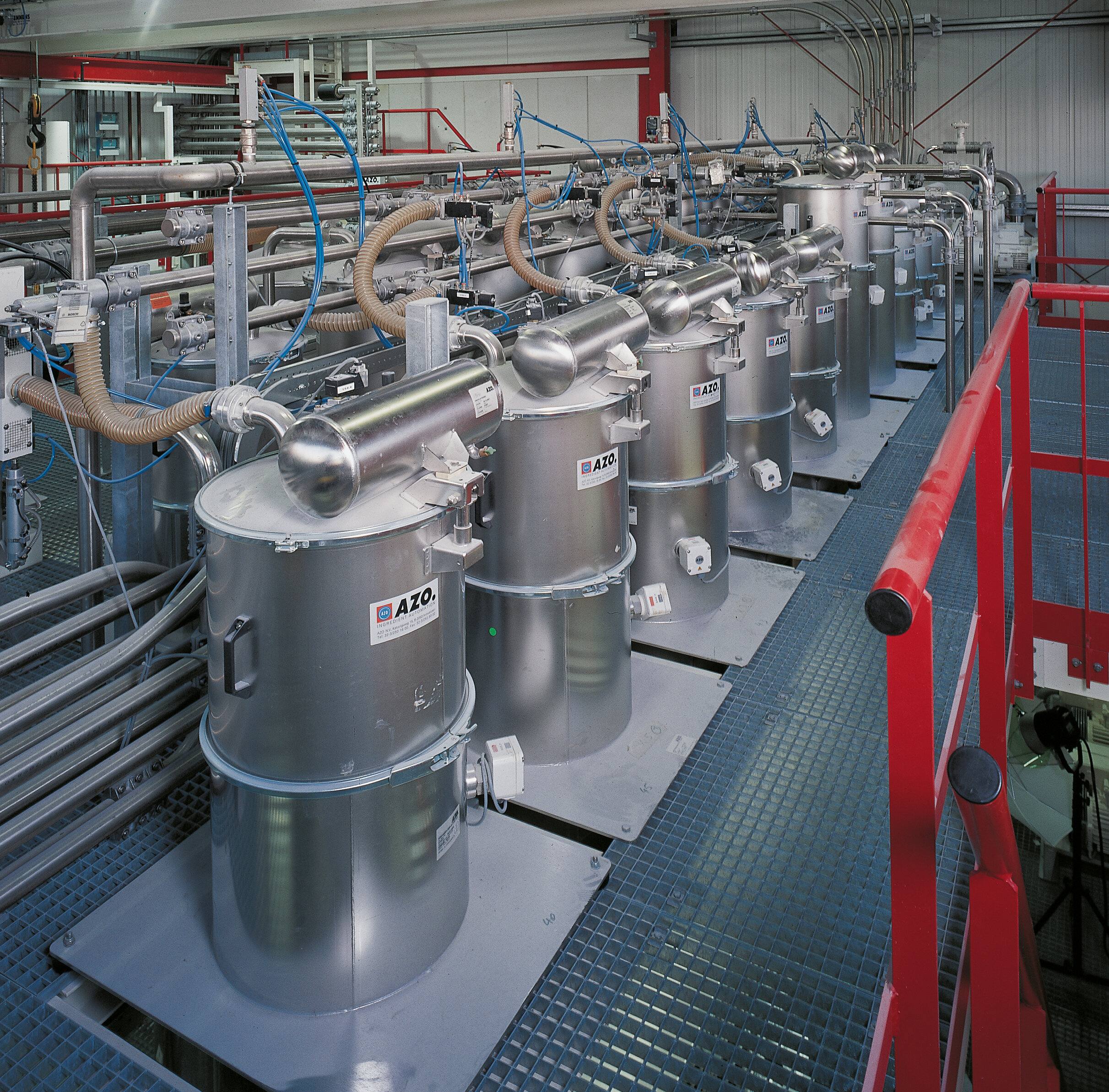
For reliable feeding of flow-resistant bulk materials to processing machines in the food, plastic and chemical industry. The bulk materials can be picked up from e.g. sacks, drums or silos. The type PK... receivers are used as individual receivers, with a separate blower each, in discontinuous vacuum, low-velocity vacuum and dense-phase vacuum conveying systems. They are mounted on the batch hoppers of the processing machines where they serve for separating the bulk materials.
Filter with compressed air purging. Outlet with conical valve operated via compressed air, conveying and clean air connection, electronic control or PLC control connection. Strong clamping ring for mounting on customer’s machine hopper. All parts in contact with product of stainless steel, roll-bright and polished surfaces, ground welding seams.
When switching the blower on, a vacuum is generated causing the product to be transferred via the conveying line from the pickup point to the receiver. When the conveying phase has ended, the outlet cone opens and the product is discharged. A new conveying cycle starts when the level control in the outlet requests more product. The filter is purged by automatic compressed air pulses after each conveying phase, and the air escapes via the vent filter.
The sequence of the operating cycles is controlled by a freely programmable or an electronic control system. The actual operating state is displayed at the electronic control.